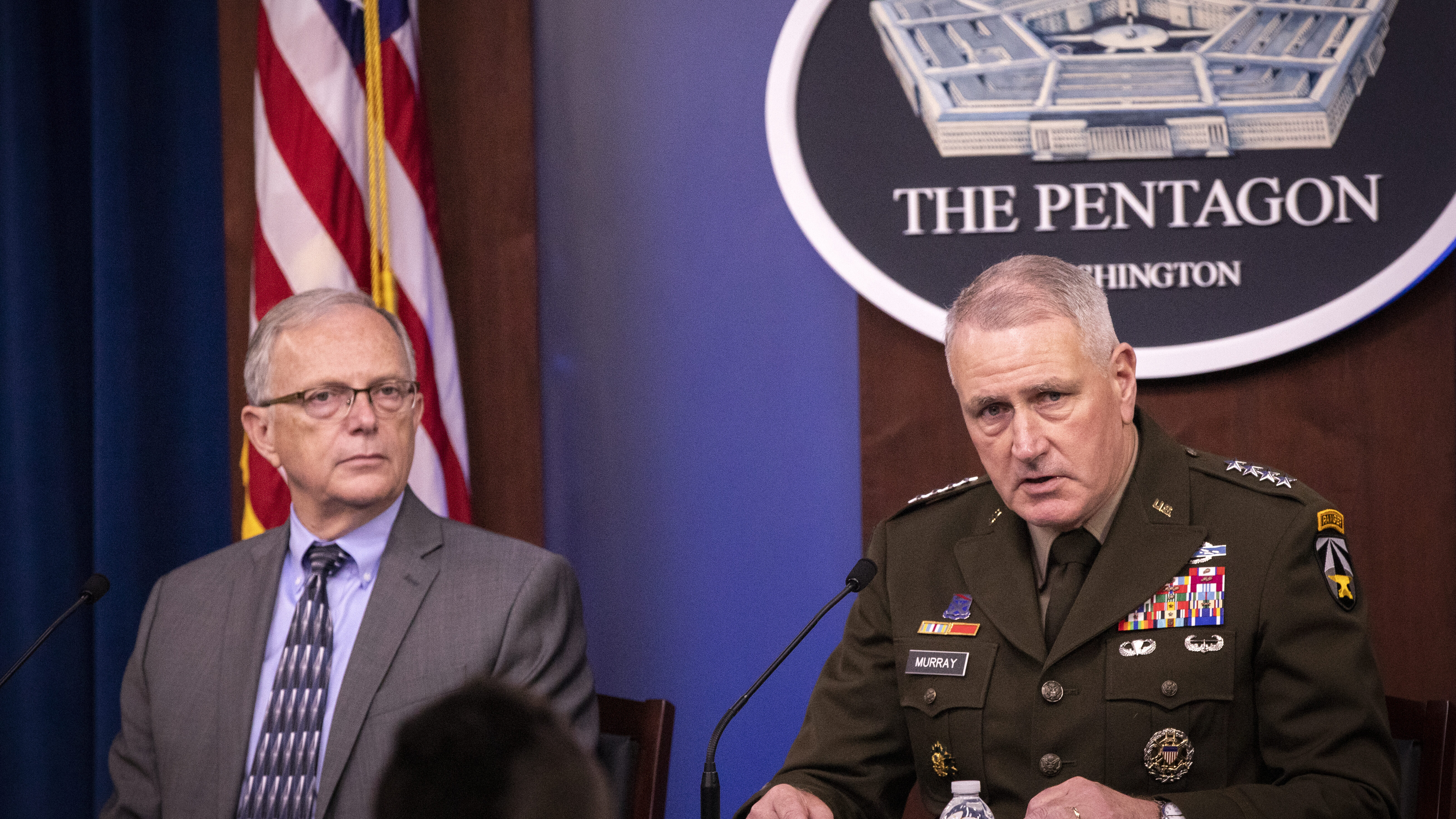
Gen. John Murray, leader of Army Futures Command, said persistence is key to the Army’s modernization efforts. (File)
For nearly four years, Gen. John Murray has charted the course of Army modernization through the formation of Army Futures Command, established in 2018 to help futurize the service’s systems for the battles against advanced threats.
Now, with his retirement expected before the end of the year, he says the only way for modernization to actually happen in the future can be summed up in one word: persistence.
“It’s pushing the Army to think about modernization in terms of persistence, especially with the way technology is accelerating in terms of the turnover of technologies,” Murray said in an interview with Breaking Defense. “You almost have to look at modernization as persistent. And you have to look at modernization through software, as opposed to hardware changes – which I think we tend to look at modernization as hardware and not enough the software side of it.”
Under Murray’s purview are eight cross-functional teams, each focused on 31 modernization priorities ranging from modernizing the tactical network, to future vertical lift, to building missiles that fly significantly further. It’s an effort that the Army has significantly backed, asking for $11.251 billion in its fiscal year 2022 request for the cross-functional teams, a $597 million increase over the previous request.
The Army’s modernization effort hinges on bringing two sometimes disconnected communities together: the requirements community, represented by the cross-functional teams, and the acquisition community, made up of program executive offices. The CFTs and PEOs work together to define the Army’s future needs, develop them with industry, and purchase them. In the future, that relationship may evolve.
“Will there be a need for cross functional teams going forward in the future? I would argue there are. We’ll want to look at evolving technology,” Murray said. “As an effort becomes a program of record, the CFT involvement will lessen obviously become more of a supporting role to a PEO [or] PM [project manager]. … I personally think there’s going to be new things to look at.”
For example, Murray cited the Army’s Integrated Tactical Network as a program that’s continuously evolving. That effort, led by the Network Cross-Functional Team and Program Executive Office for Command, Control, Communications-Tactical out of Aberdeen Proving Ground, Md., is constantly evaluating commercial technologies for potential inclusion in future iterations of tactical network tools it delivers to soldiers every two years.
“We want to keep that partnership between the acquisition community [and] requirements community, I think, going strong,” Murray said.
The four-star added that a critical success factor so far in modernization efforts – like the tactical network – is the soldier-centered design and continuous soldier feedback that ensures new capabilities are designed to meet soldiers needs.
“Getting soldiers involved in the development of materiel solutions at the very beginning of the program, as opposed to waiting to IOT&E [Initial Operational Test and Evaluation] to figure out all the things that they don’t like about it, I think has been helpful and accelerating delivery of capabilities,” Murray said.
The Army’s modernization efforts correspond with the Pentagon’s shift in focus from counterterrorism to high-tech war against near-peer threats in Russia and China. In response, the Army is making multi-domain operations – battle across the five warfighting domains – doctrine.
Even as MDO is becoming service wide doctrine, Futures Command is thinking beyond MDO, through its future concepts center. Part of the Army’s future success, Murray said, is making sure Army concept writers and scientists communicate about technological advancement, so that the merging of their ideas can shape future concepts.
“We spend a lot of time thinking about what is and what can be, and we spend almost no time thinking about what could be,” Murray said.
Finally, Murray said that the Army needed to continue its focus on developing capabilities based on changing threats, instead of changing technology, “so we can shoot ahead of the duck, not at it or behind it,” he said. Trying to develop more advanced technologies, however, is going to take risk — something Murray said is vital, even as he acknowledged that the service is likely to struggle with it culturally..
“We’ve got to build some agility, some flexibility in the systems,” Murray said. “We’ve got to be more willing to accept some early risk. You’re not going to see the breakthroughs if every bit of risk is baked out of everything we do from the very beginning.”






















